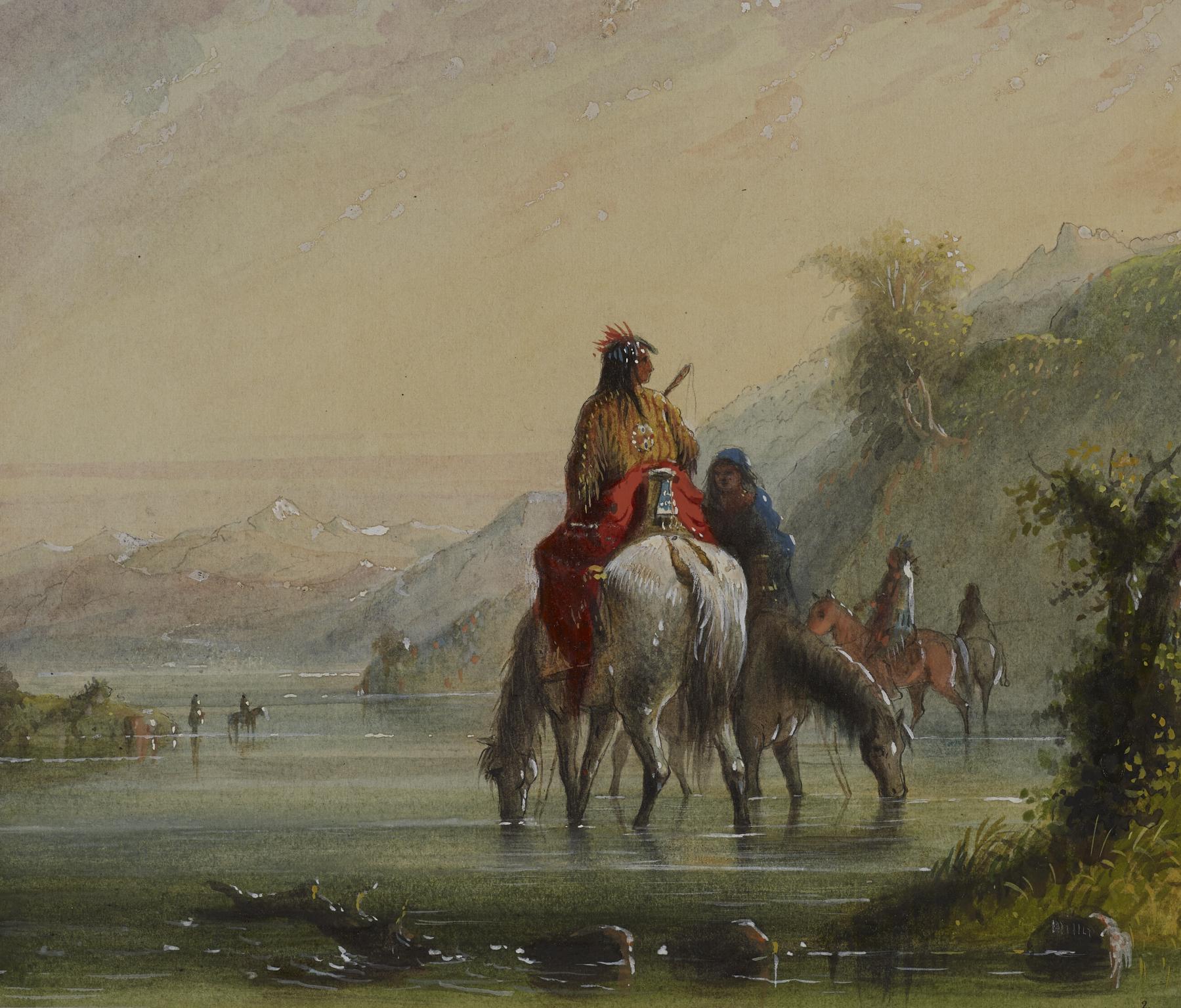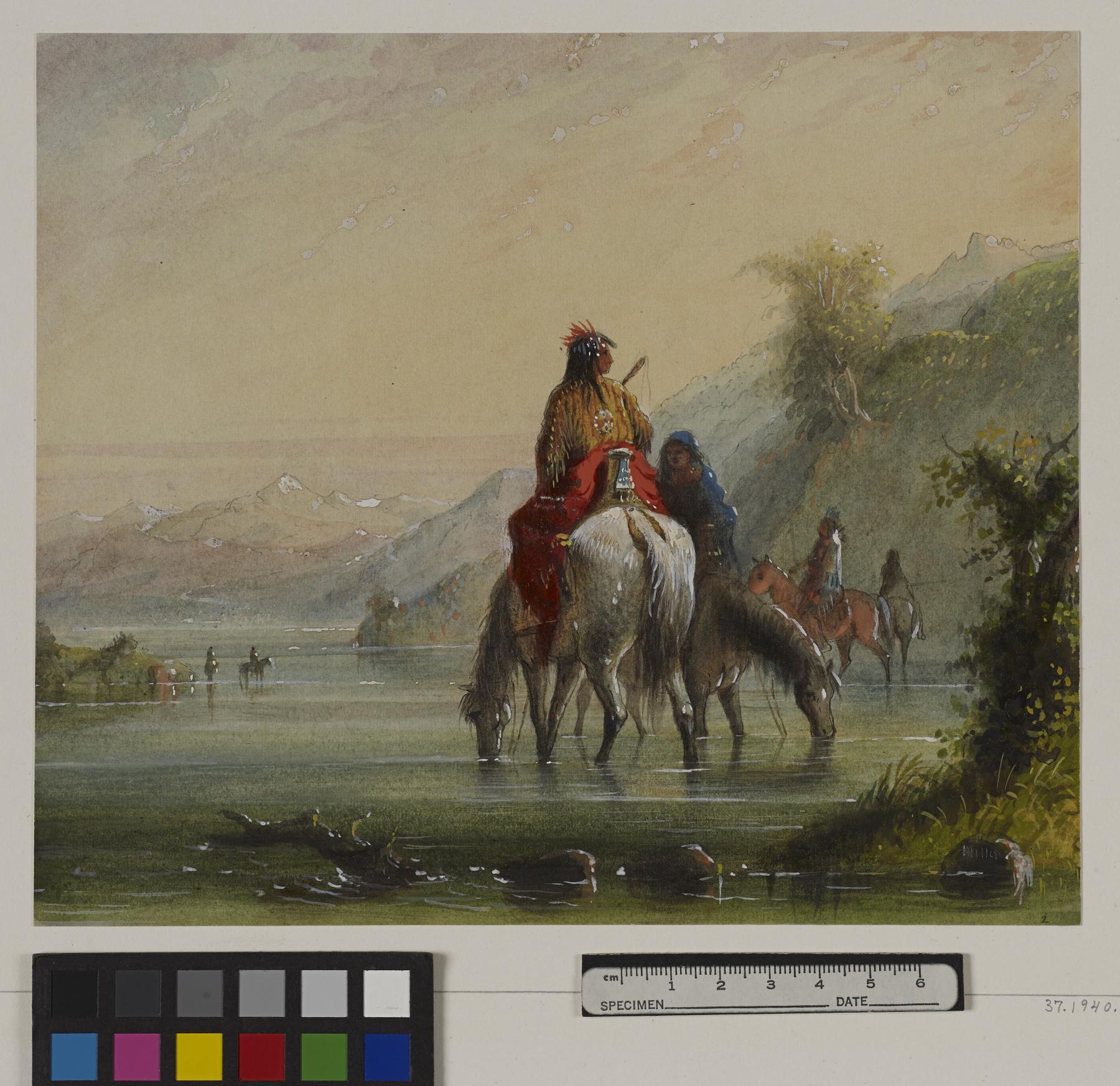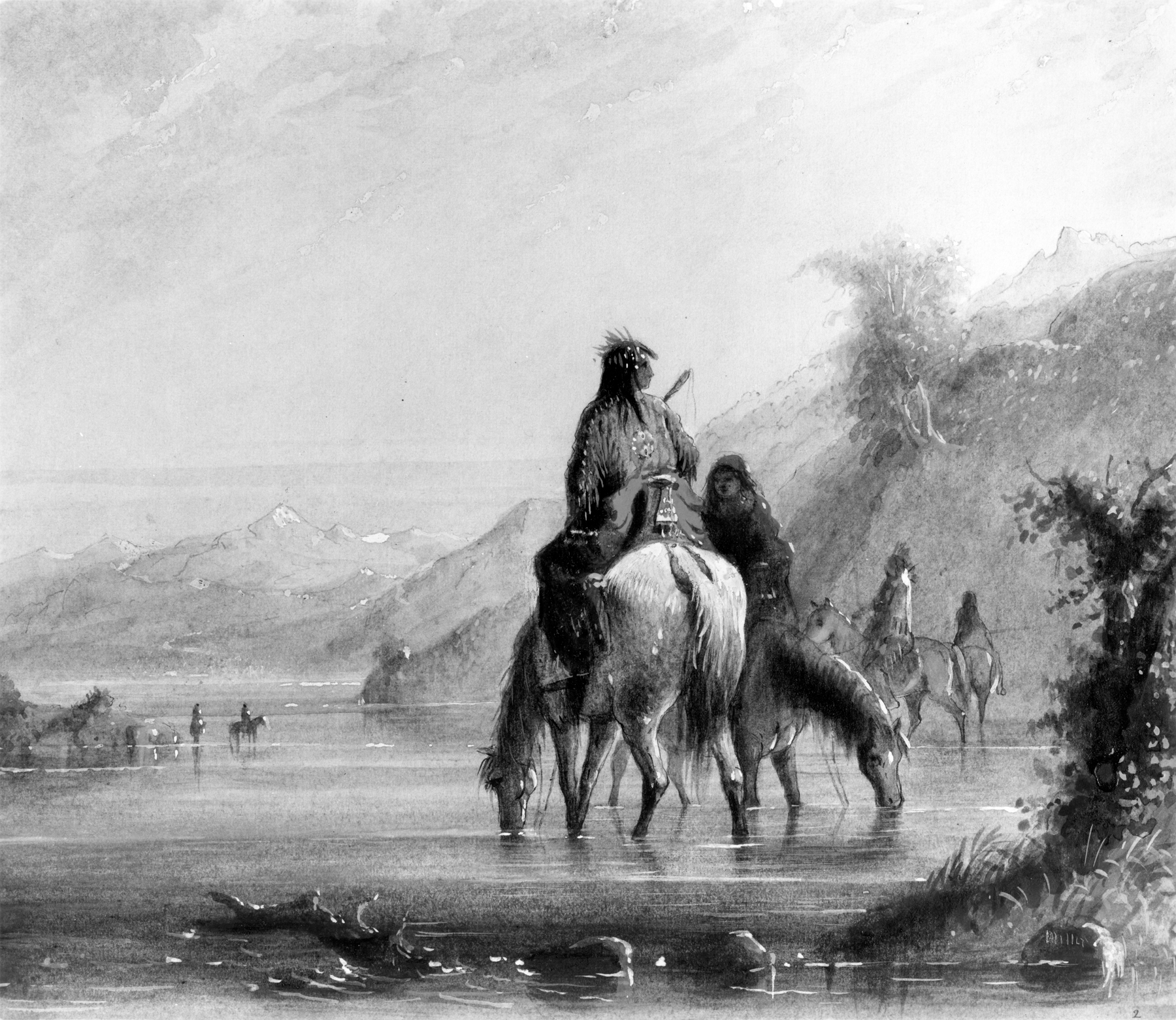Indian Girls Watering Horses (Eau Sucre River)
(18th and 19th Centuries )
Extracts from Alfred Jacob Miller’s original text, which accompanied his images of Native Americans, are included below for reference. These words, which shaped how Miller’s contemporaries viewed the watercolors, reveal the racism and sexism embedded in 19th-century exploration and colonization of the western part of what is today the United States.
"The saddle of the females is of singular form, the pummel extending upwards about 2 feet; - the cantle about 14 inches, the top of each turning outward, scroll fashion, the body of the saddle carved out of strong wood, is covered with tanned Bull-hide, places on when moist, it bleaches in drying, conforming precisely to the shape underneath, giving great strength and beauty of form. From the end of each scroll hang pendants made of brilliant colors, worked tastily with beads and fringes, and over the body of the saddle is a mass of scarlet cloth, or a 'mackinaw,' on which the rider is seated; - on one side hangs her sack of 'possibles' worked most elaborately in porcupine quills; - her dress also is ornamented with the same material; - attached to the fringes are generally a number of hawks bells, - a present from some trapper likely. Having a great penchant for the 'free trappers' (who are regarded as the highest ton) all their aspirations are in that direction. The mode of riding on horseback by the female is à la Turque." A.J. Miller, extracted from "The West of Alfred Jacob Miller" (1837).
In July 1858 William T. Walters commissioned 200 watercolors at twelve dollars apiece from Baltimore born artist Alfred Jacob Miller. These paintings were each accompanied by a descriptive text, and were delivered in installments over the next twenty-one months and ultimately were bound in three albums. Transcriptions of field-sketches drawn during the 1837 expedition that Miller had undertaken to the annual fur-trader's rendezvous in the Green River Valley (in what is now western Wyoming), these watercolors are a unique record of the closing years of the western fur trade.
Inscription
Provenance
Provenance (from the French provenir, 'to come from/forth') is the chronology of the ownership, custody, or location of a historical object. Learn more about provenance at the Walters.
William T. Walters, Baltimore, 1858-1860, by commission; Henry Walters, Baltimore, 1894, by inheritance; Walters Art Museum, 1931, by bequest.
Geographies
USA (Place of Origin)
Measurements
H: 7 1/4 x W: 8 7/16 in. (18.4 x 21.4 cm)
Credit Line
Commissioned by William T. Walters, 1858-1860
Location in Museum
Not on view
Accession Number
In libraries, galleries, museums, and archives, an accession number is a unique identifier assigned to each object in the collection.
In libraries, galleries, museums, and archives, an accession number is a unique identifier assigned to each object in the collection.
37.1940.73







